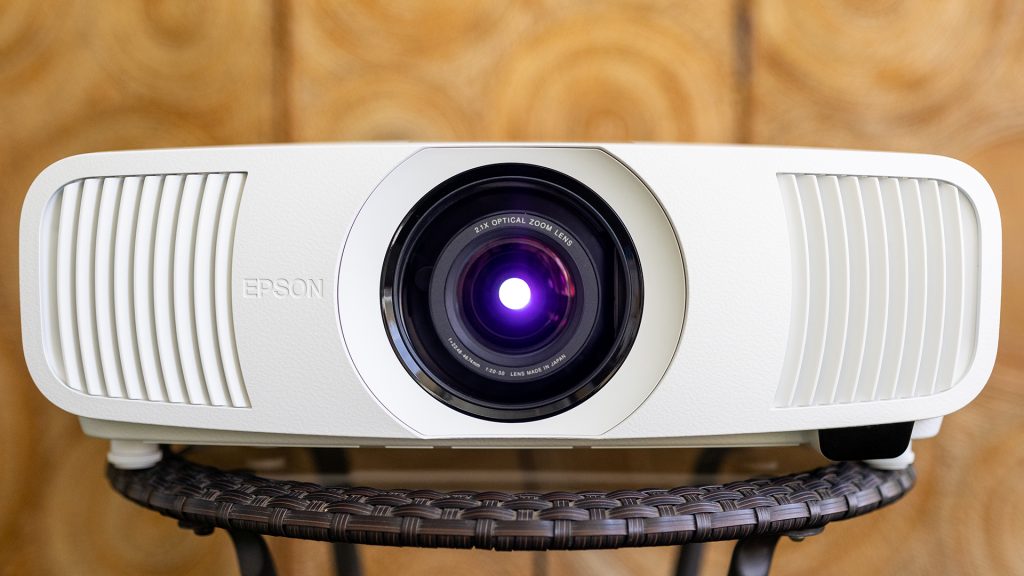With the various technologies, manufacturers, and models, there’s a vast array of possibilities for picking the right projector. From short to long throw projectors, you need to consider many things to make a good choice.
Among the many properties of a projector, which are all very important, probably the most important choice you have to make is whether you want a DLP or an LCD projector. Both these technologies have their benefits and drawbacks, so if you’d like to learn what is better, DLP or LCD projector, read the following text.

What Is Better DLP or LCD Projector?
The terms DLP and LCD refer to the technology used by the projector for displaying the image. DLP is the more “old-fashioned” approach, while LCD is the more contemporary option. Both technologies have strengths and weaknesses, so deciding what is better depends largely on your standards.
For instance, if you’re looking for smoother video screenings, LCD would be the runner-up, but in terms of color dynamics, liquid crystal displays undoubtedly take the lead. To help you make the right choice, I’ve compiled a list of properties you can use to weigh the pros and cons of these technologies before purchasing a new projector.
DLP vs. LCD Projectors
Filters
In DLP projectors, delicate components other than the imaging chip aren’t sealed. That means that they will eventually start building up dust and dirt. Once the projector’s color wheel gets filthy, the dirt will inevitably affect image quality. Dust particles and debris can easily burn or melt when touching the lamp’s surface. It significantly degrades lumen output over time.
On the other hand, all LCD projectors use air filters. With the presence of an air filter, dust and other particles cannot get in touch with the delicate components of the projectors and cause degradation of the output. Some more pricey DLP models also include air filters, so if you’re considering DLP projectors, check whether the specific make and model you’re interested in has a filter.
Contrast
Contrast is another thing to keep in mind when considering projectors. Up until a couple of years ago, DLP projectors had significant leverage over LCD projectors. DLP projectors typically had much higher full and ANSI contrast ratings than similarly priced LCD projectors.
However, since inorganic LCD panels were introduced, the advantage of DLP projectors in terms of contrast is significantly neutralized. Nowadays, most LCD 1080p home theater devices use these inorganic LCD panels.
Image persistence
Image persistence is a significant phenomenon for projectors. LCD projectors with organic LCD panels tend to leave a subtle ghost of the image even after switching to a new image. However, this can easily be fixed by displaying a white screen; nonetheless, most LCD projectors now use inorganic panels.
In contrast, DLP projectors don’t have a problem with image persistence; hence, there is no need to worry about erasing a persisting image. For older technologies like CRT and plasma-phosphor-based displays, image persistence goes to the extent of “burn-ins”, causing long-term damage.
Read more: How Does a DLP Projector Work

Saturation and brightness
Although I cannot generalize all DLP projectors and claim they have poor saturation and brightness, some are exceptionally poor. Some DLP projectors have a significantly higher lumen output, particularly those with white segments in the color wheel. However, DLP projectors for home theater typically have no white segments. Therefore, they compromise color saturation and balance.
This is still a blurry topic, as color brightness specs aren’t included in the specification sheets. But calculations go in favor of LCD projectors. If an LCD projector measures 2.000 lumens of white light, it also outputs 2.000 lumens of color light. In contrast, DLP projectors with 2.000 lumens of white light might output as little as 1.000 lumens of actual color light.
Artifacts
DLP projectors render grays by dithering, which can be a problem for solid fields, creating dithering artifacts. Dithering artifacts look like digital noise but are created by the DLP technology, not the signal itself.
LCD projectors do not use dithering and create gray colors by being “partially on”. Liquid crystals can be partially open to intermediate positions, achieving a desirable level of light transmission. Therefore, LCD technology doesn’t create dithering or rainbow artifacts. That results in a more stable video image that looks much cleaner with less noise.
Price
LCD projectors took the market by storm with a tremendous price advantage. The affordability of these devices is the major key to success, resulting in a much better distribution of LCD among commercial customers.
1080p LCD projectors are undoubtedly the most popular option, delivering impeccable quality performance for their price. To top up the outstanding performance, these projectors typically come with other neat features you cannot get within the same price range for DLP projectors.
Installation
Home theater LCD projectors typically use 2.0x zoom lenses, with extensive vertical and horizontal lens shifts. That way, they’re easy to install pretty much anywhere.
In comparison, DLP projectors typically have short zooms and little to no lens shift. They have fixed throw angles that limit the projection geometry, so DLP projectors must be positioned and installed following a set of rules to optimize their performance.
Conclusion
After taking a brief look at some of the most important differences between DLP and LCD projectors, you can easily find the one that fits your preferences. However, while considering your options, pay attention to budget, intended use, level of quality you’re after, manageability, and any special features you want.
With DLP and LCD vendors competing about who will make the next innovation to get a step ahead of the competition, you can undoubtedly get great picture quality from both technologies. Prices tend to drop while performance continues to go further.
To conclude things, DLP and LCD projectors have their advantages but also some limitations. Therefore, the answer to your question about what is better, DLP or LCD projector, depends merely on your criteria and what you’d like to get from the new device.